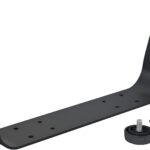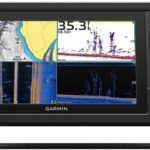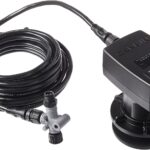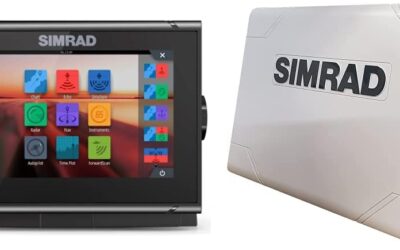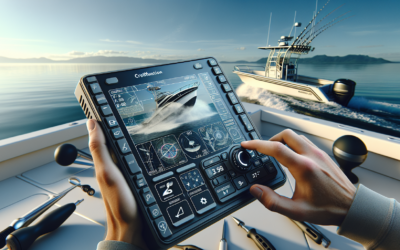Are you an avid angler looking to improve your fishing game? Look no further! “Go Wireless: A Comprehensive Guide to Portable Fish Finders” is here to help you navigate through the vast world of fish finders and discover the wonders of wireless technology. In this article, you’ll learn everything you need to know about portable fish finders, from their benefits and features to how to choose the perfect one for your fishing needs. With this comprehensive guide, you’ll be catching more fish with ease and precision in no time. So, let’s dive into the exciting world of wireless fish finders and revolutionize the way you fish!
I. Understanding Portable Fish Finders
A. What are Portable Fish Finders?
Portable fish finders are compact and versatile devices that allow you to locate fish and underwater structures with ease. These devices use advanced sonar technology to send sound waves into the water, creating detailed images of what lies beneath the surface. Unlike traditional fixed fish finders that are permanently installed on boats, portable fish finders are designed to be easily carried and used in various fishing situations.
B. How do Portable Fish Finders Work?
Portable fish finders work by emitting sound waves, or sonar, into the water. These sound waves then bounce off objects and return to the fish finder, creating a detailed representation of the underwater environment. The device analyzes the returning sound waves to determine the depth, temperature, and structure of the water, as well as the presence and location of fish.
C. Why Choose a Portable Fish Finder?
There are several reasons why you might choose a portable fish finder over a traditional fixed model. Firstly, portability is a major advantage. With a portable fish finder, you can easily take it with you on fishing trips and use it from various locations, whether you’re fishing from a boat, kayak, or the shore. Secondly, portable fish finders are generally more affordable than fixed models, making them a great option for budget-conscious anglers. Lastly, portable fish finders offer convenience and versatility, allowing you to move freely and explore different fishing spots without the need for permanently installed equipment.
II. Types of Portable Fish Finders
A. Castable Fish Finders
Castable fish finders are small, wireless devices that can be attached to fishing lines and cast into the water. These compact devices are often shaped like a ball or a fisherman’s bobber and connect to your smartphone or tablet via Bluetooth. Castable fish finders are perfect for anglers who prefer fishing from the shore or in areas with limited access. They offer real-time sonar readings and can help you locate fish even in hard-to-reach spots.
B. Wrist-Worn Fish Finders
Wrist-worn fish finders, as the name suggests, are fish finders that you wear on your wrist like a watch. These compact devices feature a small display and are often equipped with GPS functionality. Wrist-worn fish finders are great for anglers who prefer a hands-free experience while fishing. They provide real-time sonar readings and other useful information right on your wrist, allowing you to keep your hands free for fishing.
C. Smartphone Fish Finders
Smartphone fish finders are portable fish finders that rely on your smartphone or tablet for the display and data processing. These devices usually connect to your smartphone via Bluetooth and provide real-time sonar readings and other important information through a dedicated mobile app. Smartphone fish finders are perfect for anglers who want a compact and convenient solution without the need for an additional display.
D. Handheld Fish Finders
Handheld fish finders are the most traditional type of portable fish finders. These devices feature a dedicated display screen and often come with a built-in or attached transducer. Handheld fish finders are versatile and can be used in a variety of fishing situations, whether you’re on a boat, kayak, or fishing from the shore. They offer a larger display compared to other portable fish finders, making it easier to read sonar readings and navigate through menus.
III. Key Features to Consider
A. Sonar Technology
When choosing a portable fish finder, the quality and effectiveness of its sonar technology should be a top consideration. Look for fish finders that offer high-frequency sonar capabilities, as this allows for greater detail and accuracy when detecting fish and underwater structures. Dual-frequency sonar is also useful, as it provides a combination of wide coverage and detailed imaging.
B. Wireless Connectivity
Wireless connectivity is another important feature to consider. Make sure the portable fish finder you choose has reliable and easy-to-use wireless connectivity options. Bluetooth is a common wireless technology used in many portable fish finders, allowing you to connect the device to your smartphone or tablet. This enables you to view real-time sonar readings, access detailed maps, and even share your fishing data with others.
C. GPS Functionality
GPS functionality is particularly useful for anglers who enjoy exploring new fishing spots and navigating unfamiliar waters. Look for portable fish finders that offer built-in GPS or the ability to connect to external GPS devices. This feature allows you to mark your favorite fishing spots, track your fishing route, and even create detailed maps of your fishing areas.
D. Battery Life
Battery life is a crucial consideration, especially if you plan on spending long hours fishing. Look for portable fish finders that offer a decent battery life, preferably one that can last for an entire day of fishing. Additionally, consider the ease of recharging or replacing the batteries to ensure uninterrupted fishing sessions.
E. Display Size and Resolution
The size and resolution of the display screen can greatly impact your user experience. A larger display with higher resolution allows for clearer and more detailed sonar readings, making it easier to spot fish and underwater structures. However, keep in mind that a larger display may also mean a bulkier and less portable device.
F. Transducer Type
The transducer is a critical component of a fish finder as it sends and receives sonar signals. Consider the type of transducer offered by portable fish finders. Broadband transducers are versatile and can provide a wide range of sonar frequencies, while CHIRP (Compressed High-Intensity Radar Pulse) transducers offer greater detail and accuracy.
G. Water Depth and Frequency Range
Different fishing environments require different depth capabilities and frequency ranges. Consider the typical water depth you’ll be fishing in and choose a portable fish finder that can handle those depths. Additionally, ensure that the frequency range of the device is suitable for your fishing needs, as different frequencies can enhance the detection capabilities in certain environments.
H. Mapping and Navigation
If you enjoy exploring new fishing spots or fishing in unfamiliar waters, consider a portable fish finder with built-in mapping and navigation features. These features allow you to create detailed maps of your fishing areas, mark points of interest, and even navigate back to your favorite fishing spots.
I. User Interface and Ease of Use
A user-friendly interface is essential for an enjoyable fishing experience. Look for a portable fish finder that has intuitive menus, clear icons, and easy-to-use controls. Consider the device’s ease of setup and calibration, as well as the availability of user manuals or online guides to help you get started quickly.
J. Portability and Durability
Portability and durability are key factors to consider, especially if you plan on taking your portable fish finder on fishing trips regularly. Look for devices that are lightweight, compact, and easy to pack. Consider the overall construction and materials used, ensuring that the device can withstand the rigors of fishing, such as exposure to water, sun, and rough handling.
IV. How to Choose the Right Portable Fish Finder
A. Determine Your Fishing Needs
Before making a purchase, take some time to determine your specific fishing needs. Consider the type of fish you’re targeting, the fishing environments you frequent, and your fishing style. This will help you choose a portable fish finder that has the right features and capabilities to enhance your fishing experience.
B. Consider Your Budget
Establishing a budget is essential when choosing a portable fish finder. Determine how much you’re willing to spend and prioritize the features that are most important to you. While it’s tempting to go for the high-end models with all the latest features, there are many affordable options available that can still provide excellent performance.
C. Read Reviews and Compare
Prior to making a final decision, read reviews and compare different portable fish finder models. Online reviews from other anglers can provide valuable insights into the performance, reliability, and user experience of the devices you’re considering. Pay attention to both the positive and negative aspects mentioned in the reviews to get a well-rounded understanding.
D. Check for Manufacturer’s Warranty
When investing in a portable fish finder, it’s important to check for the manufacturer’s warranty. A good warranty ensures that you’re protected against any manufacturing defects or malfunctions. Read through the warranty terms and conditions to understand what is covered and for how long. This will give you peace of mind knowing that you’re covered in case of any issues.
E. Seek Expert Advice
If you’re new to using fish finders or are unsure about which features are most important for your fishing needs, seeking expert advice is a great idea. Visit your local fishing tackle store and speak with knowledgeable staff who can provide recommendations based on their experience and expertise. They can help you navigate through the options and find the perfect portable fish finder for you.
V. Using a Portable Fish Finder
A. Preparation and Setup
Before using your portable fish finder, it’s essential to properly prepare and set it up. Start by ensuring that the device is fully charged or that you have spare batteries on hand. Familiarize yourself with the user manual and the different parts of the fish finder. Follow the manufacturer’s instructions to mount or attach the transducer to your boat, kayak, or fishing line.
B. Understanding Sonar Readings
To effectively use a portable fish finder, it’s important to understand how to interpret sonar readings. Familiarize yourself with the different symbols, colors, and scales displayed on the screen. Learn to distinguish between fish arches, underwater structures, and bottom contours. Practice using the fish finder in different fishing spots to gain experience in reading and understanding sonar signals.
C. Utilizing GPS and Mapping Features
If your portable fish finder has GPS and mapping features, take advantage of them to enhance your fishing experience. Utilize the GPS functionality to mark your favorite fishing spots or waypoints. Create detailed maps of your fishing areas, marking points of interest and underwater structures. Be sure to regularly update the software and maps to ensure accuracy and access to the latest features.
D. Interpreting Fish Signals
Interpreting fish signals displayed on your portable fish finder can greatly increase your chances of successful fishing. Look for fish arches on the screen, which often indicate the presence of fish. Pay attention to the size and depth of the fish arches to estimate the size and location of the fish. Additionally, take note of any fish activity or movement patterns to further fine-tune your fishing strategy.
E. Maximizing Battery Life
To maximize the battery life of your portable fish finder, follow a few simple tips. Start by adjusting the brightness and backlight settings of the display to an optimal level. This will ensure clear visibility without draining the battery unnecessarily. Turn off any features or functions that you’re not actively using, such as GPS or wireless connectivity. Consider investing in spare batteries or a portable power bank to ensure uninterrupted fishing sessions.
F. Proper Maintenance and Care
Proper maintenance and care can prolong the lifespan of your portable fish finder and ensure its optimal performance. After each fishing trip, rinse the device and transducer with fresh water to remove any salt, sand, or debris. Avoid exposing the fish finder to extreme temperatures or direct sunlight for prolonged periods. Store it in a dry and safe place, preferably in a protective case or bag, when not in use.
VI. Troubleshooting Common Issues
A. Weak Sonar Signal
If you’re experiencing a weak sonar signal on your portable fish finder, there are several potential causes. Start by checking the position and alignment of the transducer. Make sure it is properly mounted and that there are no obstructions or interference blocking the signal. Adjust the sensitivity settings on the device to ensure optimal performance. If the issue persists, consult the user manual or contact the manufacturer for further troubleshooting assistance.
B. Inaccurate Depth Readings
Inaccurate depth readings can be frustrating when using a portable fish finder. Ensure that the transducer is properly installed and that it is fully submerged in the water. Remember that the depth reading is relative to the position of the transducer, so any changes in its placement can affect the accuracy. Calibrate the device according to the manufacturer’s instructions and be aware of any interference or irregularities in the water that may affect the readings.
C. Connectivity Problems
If you’re experiencing connectivity problems with your portable fish finder, start by ensuring that both devices are properly paired via Bluetooth or any other wireless connection method. Check that the Bluetooth functionality is enabled on your smartphone or tablet and that the fish finder is within the recommended range. If the issue persists, try restarting both devices and resetting the connection settings. Consult the user manual or contact the manufacturer for further assistance if needed.
D. Poor Battery Performance
If your portable fish finder is not performing as expected in terms of battery life, there are a few potential causes to consider. Start by checking if any power-hungry settings or features are enabled, such as high display brightness or continuous GPS usage. Make sure that the device is fully charged or that the batteries are in good condition. If the issue persists, it could be due to a defective battery or a larger underlying issue with the device. Contact the manufacturer for further troubleshooting or battery replacement options.
E. Display Issues
If you’re experiencing display issues with your portable fish finder, such as flickering or pixelated screen, there are a few possible causes. First, ensure that the display is clean and free from any smudges or debris. Adjust the brightness and contrast settings to see if that resolves the issue. If the problem persists, it could be a hardware or software issue. Consult the user manual or contact the manufacturer for further assistance and potential repair or replacement options.
VII. Tips and Tricks for Portable Fish Finders
A. Practice Using the Fish Finder
To become proficient in using your portable fish finder, practice using it in various fishing spots and conditions. Familiarize yourself with the different features, settings, and functions. Experiment with different sensitivity levels, display options, and sonar frequencies. The more you practice using your fish finder, the better you’ll become at interpreting sonar readings and effectively locating fish.
B. Use it in a Variety of Fishing Spots
Don’t limit yourself to using your portable fish finder in the same fishing spot every time. Take it with you to different lakes, rivers, and coastal areas to experience its full potential. By using your fish finder in a variety of fishing spots, you’ll gain a better understanding of how different environments and underwater structures affect sonar readings and fish behavior.
C. Keep an Eye on Weather Conditions
Weather conditions can greatly impact your fishing success and the performance of your portable fish finder. Pay attention to wind patterns, air temperature, and barometric pressure, as these factors can influence fish behavior and feeding patterns. Additionally, consider the effect of weather conditions on your own safety and comfort. Take necessary precautions and adjust your fishing strategies accordingly.
D. Use Additional Gear for Optimal Performance
To maximize the performance of your portable fish finder, consider using additional gear that complements its capabilities. For example, using a quality fishing line will help transmit sonar signals more effectively. Invest in a good pair of polarized sunglasses to enhance underwater visibility. Utilize a fishing rod holder or mount to keep your hands free for operating the fish finder while fishing.
E. Learn from Other Anglers’ Experiences
Take advantage of the fishing community and learn from other anglers’ experiences with portable fish finders. Join online fishing forums or communities where you can ask questions, share tips, and gain insights from experienced anglers. Pay attention to their recommendations for specific models or features that have worked well for them. The collective wisdom and knowledge of other anglers can be a valuable resource for enhancing your fishing experience.
VIII. Popular Brands and Models
A. Garmin Striker Cast
The Garmin Striker Cast is a highly recommended castable fish finder. It offers accurate sonar readings, wireless connectivity to your smartphone, and a user-friendly mobile app. The Striker Cast is durable, portable, and provides real-time sonar data to help you locate fish effortlessly.
B. Deeper Smart Sonar PRO+
The Deeper Smart Sonar PRO+ is a versatile castable fish finder that offers exceptional sonar capabilities. It provides detailed imaging of underwater structures, fish arches, and bottom contours. The PRO+ is compatible with both iOS and Android devices and offers advanced features such as GPS mapping and offline map storage.
C. iBobber Wireless Bluetooth Smart Fish Finder
The iBobber Wireless Bluetooth Smart Fish Finder is a compact and affordable option for anglers. It features a castable design and connects to your smartphone via Bluetooth. The iBobber provides accurate sonar readings, fish depth targeting, and identification of fish species. It also has a built-in LED beacon for night fishing.
D. Humminbird Helix 5
The Humminbird Helix 5 is a popular handheld fish finder known for its advanced sonar capabilities and ease of use. It features a large, high-resolution display, dual-beam sonar technology, and GPS mapping. The Helix 5 offers detailed imaging, precise depth readings, and the ability to mark waypoints and navigate back to favorite fishing spots.
E. Lowrance Hook Reveal
The Lowrance Hook Reveal is a versatile handheld fish finder that delivers exceptional performance. It features a wide-angle sonar, high-resolution display, and advanced fish-finding features. The Hook Reveal offers detailed underwater imaging, customizable sonar views, and the ability to create custom fishing maps.
F. Raymarine Dragonfly
The Raymarine Dragonfly is a highly regarded portable fish finder that combines advanced sonar technology with user-friendly features. It offers clear and detailed imaging, precise depth readings, and built-in GPS functionality. The Dragonfly also features Wi-Fi connectivity, enabling you to stream sonar data to your smartphone or tablet.
G. Vexilar SonarPhone
The Vexilar SonarPhone is a unique smartphone fish finder that offers wireless connectivity and advanced sonar capabilities. It connects to your smartphone via Wi-Fi and provides real-time sonar readings, depth data, and detailed imaging. The SonarPhone is easy to use and offers a cost-effective solution for anglers.
H. Lucky Portable Fish Finder
The Lucky Portable Fish Finder is a budget-friendly option that doesn’t compromise on performance. It features a handheld design with a clear display and user-friendly interface. The Lucky Fish Finder offers accurate depth readings, fish detection, and advanced sonar features, making it a great entry-level portable fish finder.
IX. Cost and Where to Buy
A. Price Range of Portable Fish Finders
The price range of portable fish finders can vary depending on the brand, model, and features. Entry-level portable fish finders can range from $50 to $150, offering basic sonar functionality and limited features. Mid-range options typically cost between $150 and $300, providing more advanced sonar capabilities, wireless connectivity, and GPS functionality. Premium portable fish finders can range from $300 to $800 or more, offering top-of-the-line sonar technology, advanced mapping features, and high-resolution displays.
B. Online Retailers
There are several online retailers where you can purchase portable fish finders. Websites such as Amazon, Bass Pro Shops, Cabela’s, and West Marine offer a wide range of options from various brands. These retailers often provide detailed product descriptions, customer reviews, and competitive pricing. Make sure to check for any ongoing promotions, discounts, or bundle deals that can help you save money.
C. Fishing and Outdoor Stores
Fishing and outdoor stores are great places to find and physically examine different portable fish finder models. Stores like Bass Pro Shops, Cabela’s, Academy Sports + Outdoors, and REI often have knowledgeable staff who can provide expert advice and recommendations. Visiting these stores allows you to compare different models side by side, ensuring you make an informed decision.
D. Secondhand Options
If you’re looking for a more affordable option, consider checking for secondhand portable fish finders. Online marketplaces such as eBay, Facebook Marketplace, and Craigslist often have used fish finders listed at lower prices. However, be sure to thoroughly examine the condition of the device, inquire about any remaining warranty, and ask for detailed information about its usage history before making a purchase.
X. Conclusion
Portable fish finders are invaluable tools for anglers looking to enhance their fishing experience. Whether you choose a castable fish finder, wrist-worn device, smartphone model, or handheld unit, these versatile devices allow you to locate fish, understand the underwater environment, and navigate new fishing spots with ease. Consider the key features and factors mentioned in this guide to choose the right portable fish finder for your fishing needs and budget. With the right device in hand and a bit of practice, you’ll soon be on your way to becoming a more successful and knowledgeable angler. Happy fishing!

